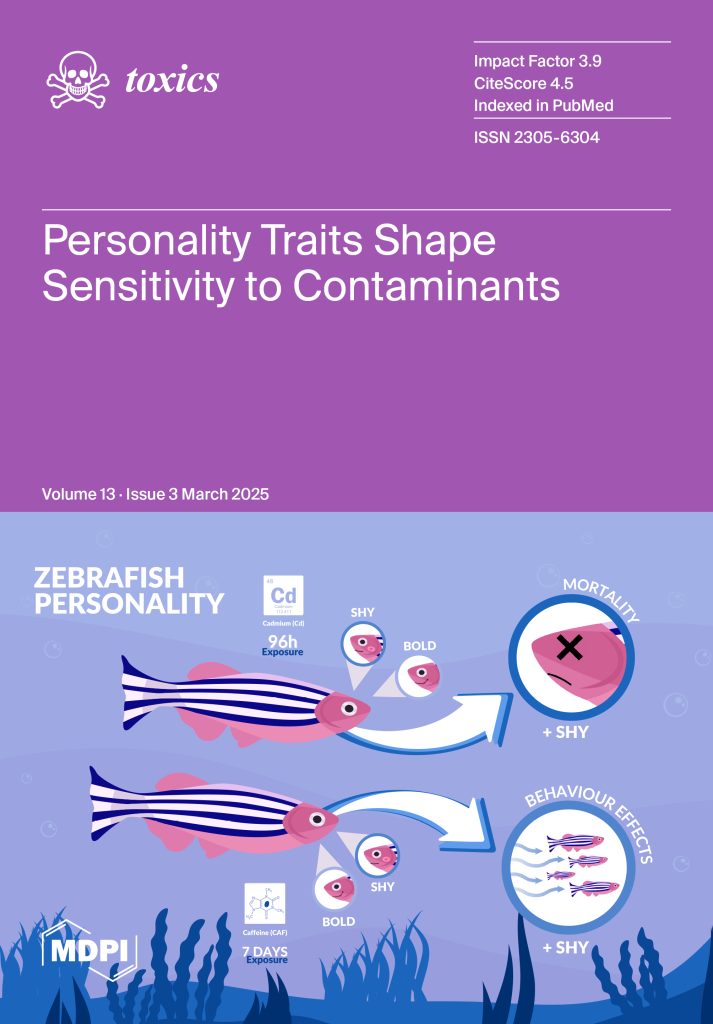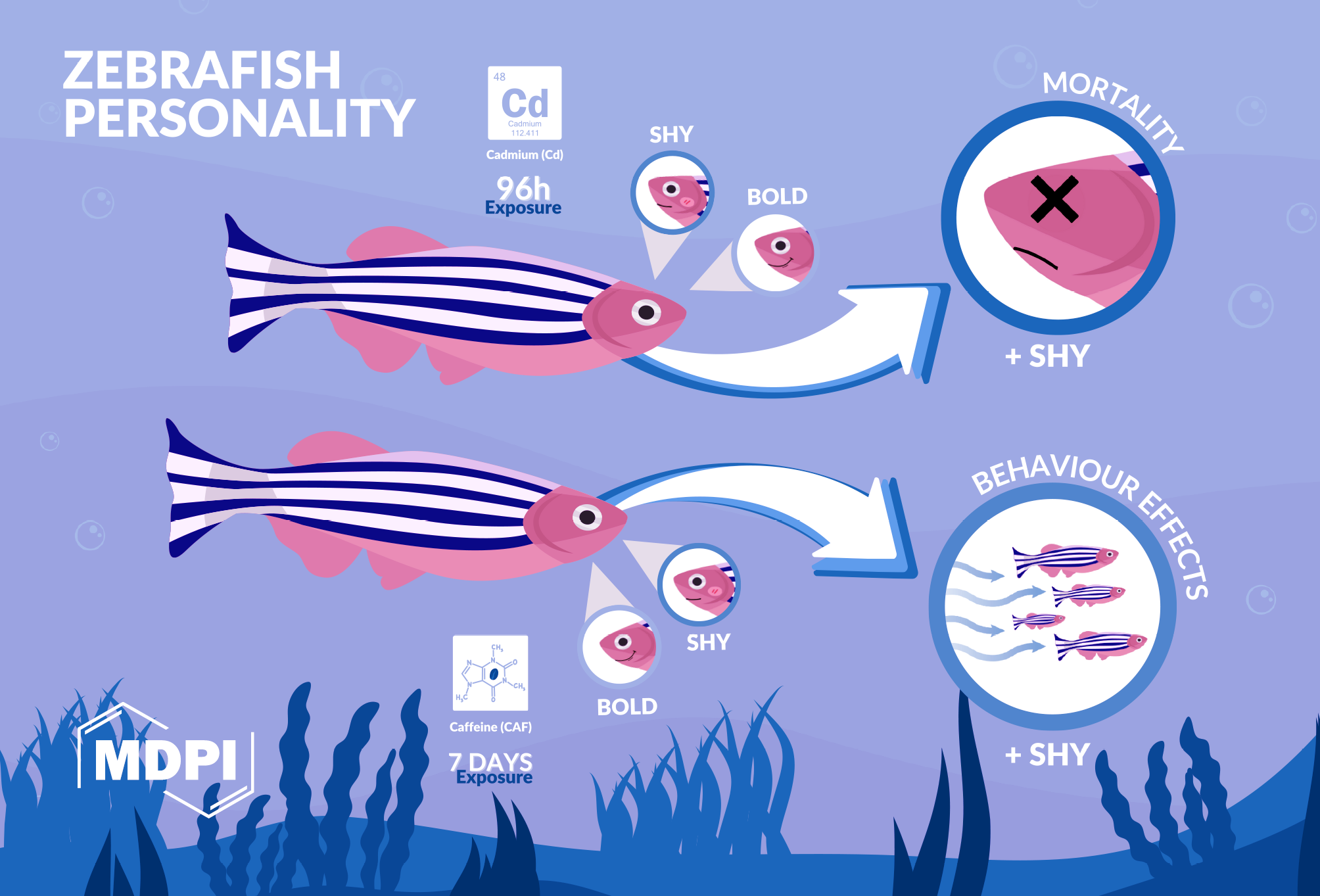The work of Niedja Santos (PhD student) and Sara Reis (master’s student), coordinated by Inês Domingues, and Miguel Oliveira, researchers at CESAM/DBIO, was recently featured on the cover of the March edition of the scientific journal Toxics (MDPI, Volume 13, Issue 3).
The article, titled “Does Personality Modulate the Sensitivity to Contaminants? A Case Study with Cadmium and Caffeine”, explores in an innovative way how the personality of zebrafish (Danio rerio), specifically their degree of shyness or boldness, can affect their sensitivity to exposure to common contaminants in aquatic environments, such as cadmium and caffeine.
The researchers assessed the behavior of the fish before and after exposure to realistic concentrations of these two contaminants. Based on standardized tests, the fish were classified as either “shy” or “bold.” After exposure, it was observed that shy individuals showed greater sensitivity, with more noticeable behavioral changes such as reduced locomotor activity and longer periods of immobility.
These results indicate that personality is a relevant factor in how aquatic organisms respond to pollution, and that individual variability may have important implications for environmental risk assessment studies. Traditionally, ecotoxicology has assumed that all individuals of a species react in the same way to contamination, but this study highlights the need to consider intraspecific behavioral diversity in order to achieve more realistic and representative assessments.
Cadmium is a toxic metal associated with industrial activities, while caffeine is considered an emerging contaminant, frequently detected in wastewater. Both compounds are known to have effects on the health of aquatic organisms, even at low concentrations.
This work shows that, beyond chemical and environmental factors, individual traits can play a central role in organisms’ vulnerability to pollution. Integrating personality traits into ecotoxicological studies could therefore improve our understanding of the risks associated with contaminants and contribute to more effective strategies for monitoring and protecting aquatic ecosystems.
Full article available [here].

